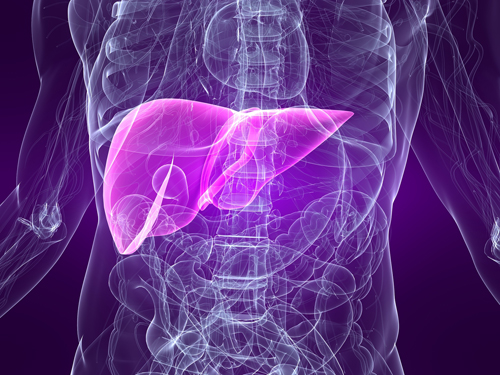
Source: NIH
Boehringer Ingelheim and Dicerna Pharmaceuticals said today they will partner to develop new treatments for chronic liver diseases by using Dicerna’s RNA interference (RNAi)-based GalXC™ tech platform, with an initial focus on nonalcoholic steatohepatitis (NASH).
The research collaboration and license agreement could generate up to $201 million for Dicerna.
Dicerna’s GalXC platform is designed to work by using RNAi to inhibit the expression of disease-causing genes by destroying the messenger RNAs of those genes—thus silencing previously inaccessible drug targets. The platform is designed to develop compounds that are broadly applicable across multiple therapeutic areas, including rare diseases, chronic liver diseases, cardiovascular diseases, and viral infectious diseases.
Boehringer Ingelheim reasons that the partnership with Dicerna will offer additional combination therapy options—and will add a further breakthrough therapy opportunity to its cardiometabolic pipeline.
That pipeline goes beyond type 2 diabetes and anticoagulation with a focus on new drugs for consequences of diabetes as well as contributing factors, such as obesity. In addition, Boehringer Ingelheim already markets treatments for thromboembolic diseases, type 2 diabetes, acute myocardial infarction, hypertension, and cardiorenal risk reduction.
“With strong capabilities in drug discovery, deep expertise in the cardiometabolic space, and proven commercial experience, Boehringer Ingelheim is a natural partner to speed the development of the first GalXC RNAi program targeting chronic liver disease,” said Dicerna president and CEO Douglas M. Fambrough, Ph.D., said in a statement. “We believe that Dicerna’s GalXC technology platform is ideally suited for the development of novel RNAi therapies for NASH and other chronic liver diseases.”
Dicerna focuses on R&D of new treatments for diseases that involve the liver—including chronic liver diseases, viral infectious diseases, cardiovascular diseases, and rare diseases.
Targeting One Gene, with Option for Second
Boehringer Ingelheim and Dicerna have agreed to target an undisclosed “specific disease-linked gene in the hepatocytes” for the treatment of chronic liver disease using the GalXC platform, according to a Dicerna regulatory filing. The agreement covers the development of product candidates against that target gene, with an option for Boehringer to add the development of product candidates that target a second gene.
According to the filing, Boehringer Ingelheim has agreed to pay Dicerna $10 million upfront, and up to $191 million in payments tied to achieving development and commercial milestones. Boehringer Ingelheim has also agreed to pay Dicerna royalty payments on potential global net sales, subject to certain adjustments, tiered from high single digits up to low double-digits.
Dicerna could receive even more money from Boehringer Ingelheim if it exercises its option to add a second target—consisting of an option fee payment and success-based development and commercialization milestones and royalty payments, the filing added.
Boehringer Ingelheim’s collaboration with Dicerna is the company’s second effort in recent months to advance new treatments for NASH.
On August 24, Boehringer Ingelheim launched a European and North American Phase IIa trial assessing BI 1467335 (formerly PXS-4728A) in NASH. The multicenter, double-blind study in 150 patients with clinical evidence of NASH is designed to establish proof of clinical principle, investigate suitable dosing, and to evaluate the safety of BI 1467335
BI 1467335 is an oral inhibitor of amine oxidase, copper containing 3 (AOC3), also known as vascular adhesion protein-1 (VAP-1) or semicarbazide-sensitive amine oxidase (SSAO). The drug candidate is designed to block leukocyte adhesion and tissue infiltration in inflammatory processes underlying NASH, for which it has received the FDA’s Fast Track designation.
BI 1467335 was acquired by Boehringer Ingelheim from Pharmaxis in May 2015 for up to €222.5 million (nearly $260 million), of which €27.5 million ($32 million) was paid upfront.



